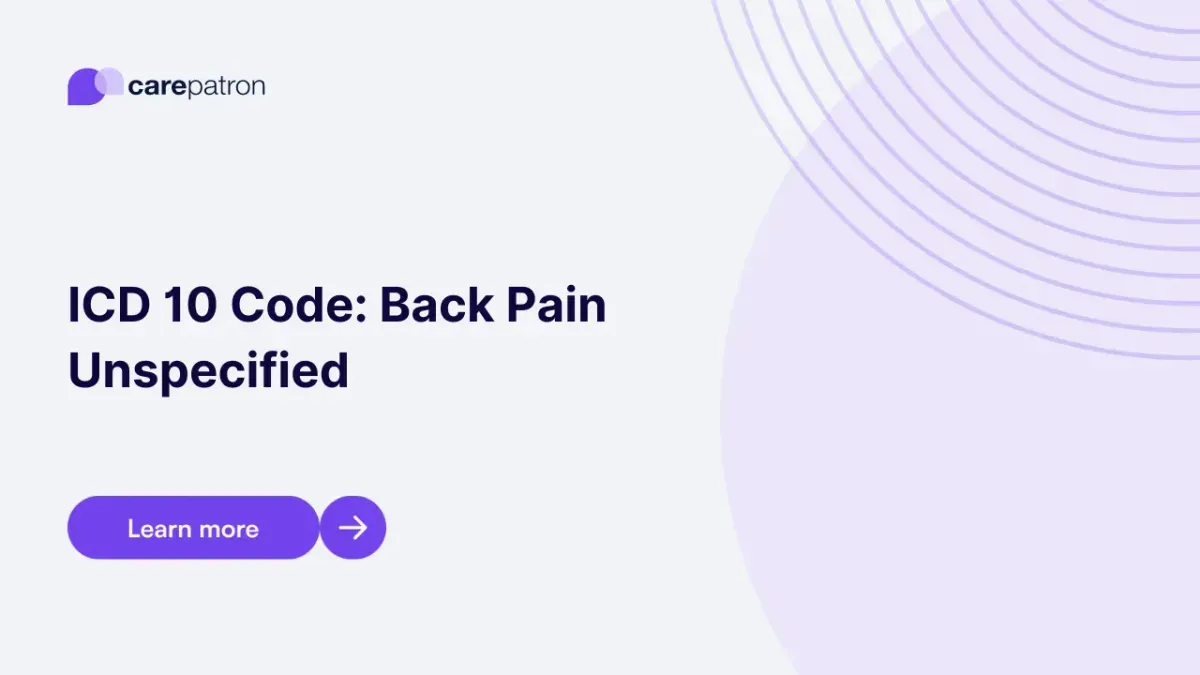
Back Pain Unspecified ICD-10-CM Codes
Read this short guide and learn about back pain unspecified ICD codes you can use.
Use Code
Commonly asked questions
No. All unspecified ICD codes are valid and unbillable. If you encounter an ICD code like M54, which is just titled Dorsalgia, then that is invalid and unbillable. If it says unspecified, it is valid and unbillable.
Back pain likely results from a specific problem, so healthcare professionals and providers will conduct physical examinations involving specific techniques, blood tests, electromyography, and imaging tests.
It depends on the severity and what’s causing it. Some might just need rest and exercise. Some might need to use hot/cold compresses and medication (e.g., pain relievers or muscle relaxants). Some might have to take physical therapy. For extreme cases, surgery is the best option.
EHR and practice management software
Get started for free
*No credit card required
Free
$0/usd
Unlimited clients
Telehealth
1GB of storage
Client portal text
Automated billing and online payments
